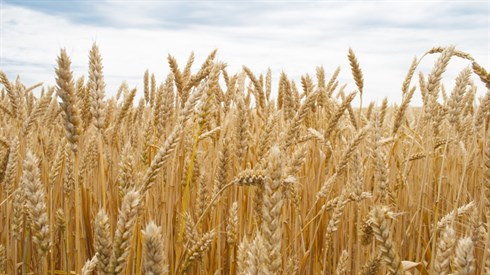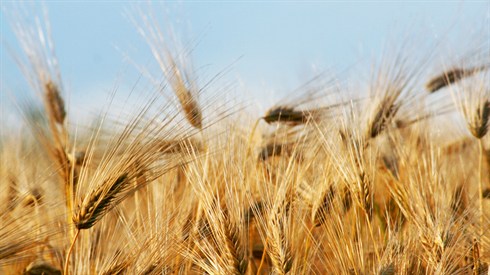509
"I have been looking for a specialty shampoo that contains oat bran. Someone found it in a very expensive store, and it does exactly what I want. One day, after showering, I noticed the label says that it is made in Israel! Does this mean that it is prohibited as tevel (produce that did not have terumah or maaser separated)?"
Introduction:
The end of parshas Korach contains many references to various mitzvos that the Torah calls "terumah." In Modern Hebrew, any charitable donation is called a "terumah," but, in the Torah, this word means an "elevated portion" and can refer to numerous sanctified foods, including korbanos, challah, bikkurim, maaser, and what we usually call terumah and terumas maaser. The fact that the term "terumah" may refer to so many different things is one reason why a superficial reading of the end of parshas Korach can be confusing, unless you study it with Rashi or a different commentary (such as that of Rav Hirsch) that explains the parsha according to the Torah she’be’al peh.
The pesukim in parshas Korach that discuss what we call terumah read as follows: "And Hashem spoke to Aharon: Behold, I have hereby given you the guarding of my terumah… Of the best of the oil, of the best of the wine (tirosh) and grain, the first of what is given to Hashem I have given to you (Bamidbar 18, 1,12)."
Note that the Torah mentions terumah of oil, referring to the olive crop, of tirosh, usually understood to mean as yet unfermented wine (also known as unpasteurized grape juice), and of grain. This implies that the mitzvah min haTorah of separating terumah applies only to olive oil, wine and grain. Indeed, most authorities understand that, min haTorah, the requirement to separate terumos and maasros applies only to the five species of grain (wheat, barley, spelt, rye and oats), grapes, olives, grape juice, wine and olive oil (see Sifra). The requirement to separate terumos and maasros on other fruits and vegetables is rabbinic.
In Chazal’s terminology, the various gifts provided to the kohein and others are called matanos, gifts. These matanos have varying levels of sanctity:
A. Very holy, that may be eaten only by male kohanim in the Beis Hamikdash and only when someone is completely tahor;
B. Somewhat less holy, that min haTorah may be eaten anywhere by a kohein’s immediate household, provided that they are completely tahor;
C. Lesser sanctity that may be eaten by anyone, but only in Yerushalayim and when tahor;
D. No sanctity at all, and, although required to be donated, may be eaten by anyone.
Seven of these "gift" agricultural mitzvos or matanos can be organized in the following way:
1. Bikkurim (sanctity level: B)
The first fruits of the seven species for which Eretz Yisrael is lauded, which are brought to the Beis Hamikdash. These are treated with the same level of sanctity as terumah¸ which we will explain shortly.
2. Terumah gedolah usually called just "terumah -- (sanctity level: B)
The separation from produce grown in Eretz Yisrael that the Torah requires we give to the kohein. There is a requirement miderabbanan to separate terumah and maasros also outside Eretz Yisrael, but, according to most authorities, only in lands that are adjacent to Eretz Yisrael. (Because of space considerations, we will not be discussing the vast halachic literature that debates whether there is a requirement to separate terumos and maasros today in countries like Egypt, Lebanon, Syria and Jordan, which border on Eretz Yisrael. For the same reason, we will not discuss where the borders of Eretz Yisrael are, germane to these mitzvos. We will also not discuss the question as to whether there is a mitzvah to separate terumos and maasros on produce grown by a non-Jew on a non-Jew’s land, because the accepted practice, going back hundreds of years, is to be lenient.)
How much terumah?
Min haTorah, there is no minimal requirement how much terumah one must give to a kohein; to quote Chazal, one wheat kernel given as terumah exempts an entire silo. In the days when the kohein could become completely tahor and then eat the terumah, Chazal instituted a minimal percentage of the crop that should be designated as terumah (one part in sixty, or 1.67%), but preferred that an individual give more. They allowed the individual latitude to decide how much he wants to donate as terumah: one part in forty (2.5%), one part in fifty (2%), or the minimum I mentioned above, one part in sixty (1.67%).
Produce that has not yet had terumos and maasros separated is called tevel, and may not be eaten or used.
We should also note that, according to accepted halacha, the obligation of separating terumos and maasros today is only miderabbanan, even on grain, grapes, and olives, until such time that most Jews, again, live in Eretz Yisrael.
3. Maaser rishon (sanctity level: D, but only after the terumas maaser is separated)
The first tithe (one tenth), given to the levi.
4. Terumas maaser (sanctity level: B)
A tithe separated by the levi from the maaser rishon that he receives, which the levi then gives to a kohein. Since the levi receives ten percent of the crop after terumah has been separated, and he, in turn, is separating ten percent of what he receives, terumas maaser adds up to one hundredth, 1%, of the crop.
Terumah and terumas maaser have the same sanctity, which means that, min haTorah, both of them may be eaten anywhere, but only by a kohein and most of his family and household members and only when both they and the terumah are completely tahor.
The accepted halacha is that the remaining maaser rishon has no sanctity, and may be eaten by anyone, notwithstanding the fact that there is a dispute among tana’im concerning this issue. If the levi chooses to, he may sell the maaser or give it away to whomever he chooses. Furthermore, none of the restrictions we will discuss shortly regarding redemption or use applies to maaser rishon.
A kohein or levi who has his own produce must separate terumos and maasros, although he may then keep what he is entitled to as a kohein or levi (Rambam, Hilchos Maasros 1:13; for details of this law, see Mishpetei Aretz, Terumos Umaasros 13:9).
5. Maaser sheini(sanctity level: C)
A second tithe, separated in the first, second, fourth and fifth years of the seven-year shemittah cycle, that the owner keeps with plans to eat in Yerushalayim when he is tahor. Alternatively, the owner may redeem the maaser sheini’s kedusha onto coins. The coins are brought to Yerushalayim and used to purchase food that is eaten in Yerushalayim. Maaser sheini that is tahor may be eaten by anyone who is tahor and maaser sheini that is redeemed may be eaten by anyone and does not need to be kept tahor.
6. Maaser ani (sanctity level: D)
A different form of "second tithe," given in years when there is no maaser sheini (i.e., the third and sixth years of the shemittah cycle), that is given to the poor. Once separated, this maaser has no special sanctity and may be eaten by anyone, even by someone who is tamei, but it is property of the poor. The owner of the field decides to which poor person he gives the maaser ani.
Since shemittah produce is ownerless, there are, usually, no terumah and maasros separations that year. In the unusual instances where there are, which is a topic for a different time, there is extensive halachic discussion whether one separates maaser sheini or maaser ani.
7. Challah (sanctity level: B)
A portion given to the kohein separated from dough. This "gift" has the level of sanctity of terumah.
Separating and giving
In general, most of these matanos require two stages to fulfill the mitzvah. The first stage is the proper separation, usually preceded by a brocha, and the second stage is giving the matanah to the appropriate party. As I mentioned above, in the case of maaser sheini, the owner keeps or redeems the produce (rather than giving it to someone). After redeeming maaser sheini, the fruit has no more sanctity.
There are several situations in which there is a mitzvah to separate terumos and maasros, but there is no mitzvah to give the matanah to a kohein, levi or poor person. The most common situation is when it is uncertain, a safek, whether there is a requirement to separate terumos and maasros. We will discuss shortly one such example. In these instances, you are not required to give away the terumos and maasros. They are yours to sell, or even to eat, if there is no sanctity involved, such as maaser rishon or maaser ani (Shulchan Aruch, Yoreh Deah 371:1).
There is another practical halachic difference when it is uncertain if there is a requirement to separate terumos and maasros: no brocha is recited prior to separating the terumos and maasros.
Using terumah
In today’s world, terumah has relatively little market value. Terumah tehorah may be eaten only by a kohein or his family members who are tehorim. Since we have no parah adumah, we cannot become fully tehorim today and therefore, no one can eat terumah tehorah.
Although terumah may not be eaten today, there are still two potential uses that may be made of terumah. Terumah olive oil may be kindled, but the light must be used by a kohein. If the terumah olive oil is tehorah, care must be taken not to make it tamei. Terumah temei’ah may be used by a kohein for kindling without this concern.
There is also the possibility of using terumah for feeding animals owned by a kohein, a topic that I will leave for a different time, because of space considerations.
The question now becomes what to do with terumah tehorah that has no practical use.
At the beginning of this article, I quoted the pasuk that Aharon was instructed regarding the guarding of my terumah. The term guarding, mishmeres, means that one is required to make sure the terumah is not actively destroyed or made tamei.
Since no one is tahor today, terumah may not be eaten. If the terumah is itself tamei, it is destroyed, preferably by burning it. If the terumah is tehorah, we are neither permitted to eat it nor to destroy it because of the law of mishmeres. What does one do with it?
This is a dispute among halachic authorities, and one of the unusual situations in which Rav Moshe Feinstein disagreed with the opinion of rishonim, without finding a source in rishonim that agreed with him. According to the Sefer Haterumah and the Tur (Yoreh Deah, 331), the halacha requires that terumah tehorah be buried, so that no one mistakenly eats it. Rav Moshe rules that this is considered destroying terumah, since this causes the terumah to rot, which is prohibited. Instead, he requires placing the terumah tehorah in a place where it will be left undisturbed until it decays (Shu’t Igros Moshe, Yoreh Deah 3:129). A bin or box set aside for this purpose is called a pach terumah, where the terumah tehorah remains until inedible. When it decomposes to this extent, one may dispose of the produce in the regular garbage.
Why is this true?
Once terumah or tevel can no longer be eaten, it loses its sanctity. Although the concept that decay eliminates sanctity seems unusual, this is only because we are unfamiliar with the mitzvos where this principle applies. Other mitzvos where this concept exists are shevi’is, terumah, challah, bikkurim, maaser sheini and reva’ie (Rambam, Hilchos Terumos Chapter 11; Hilchos Maaser Sheini 3:11; Hilchos Shevi’is 5:3). We burn the special challah portion after separating it only because it has become tamei. If the challah did not become tamei, one may not destroy it but must place it somewhere, until it decays on its own.
Shampooed tevel
At this point, we can discuss our opening question:
"I have been looking for a specialty shampoo that contains oat bran. Someone found it in a very expensive store, and it does exactly what I want. One day, after showering, I happened to look at the label and noticed that it says that it is made in Israel! Does this mean that it is prohibited as tevel?"
Indeed, our questioner may have surmised correctly that the oat bran might have once had the status of tevel. If the oats were grown for food, one would be required to separate from them terumos and maasros, and the oats would have a status of tevel until these are separated. However, if the oats were grown for animal feed, there would be no requirement terumos and maasros and no status of tevel. because oats are commonly grown as forage.
More germane to our discussion is that, even if the oats were grown for food, once mixed into the shampoo as an ingredient, they become inedible and lose their status as tevel. Whether they naturally decayed to a stage where they became inedible or were processed or mixed until that point, the kedusha of tevel, terumos and maasros is lost. So, our consumer may continue using the shampoo without any halachic concerns.
Other terumah rules
Cultivated food items, other than grain, grapes and olives, that grew in Eretz Yisrael are obligated in terumos and maasros miderabbanan. There are a few interesting exceptions: for example, there is no obligation to separate terumos and maasros from mushrooms; since they are fungi, they are not considered as growing from the ground. This also affects their brocha, which is shehakol and not ha’adamah.
If I might digress, here is an interesting nifla’os haborei experiment that you can perform yourself. Take some raw vegetables and microwave them for two minutes, and then do the same with some raw mushrooms. When you microwave the mushrooms there will be a considerable amount of water, which does not happen when you microwave the veggies. The reason is that vegetables draw water from the earth through their root, and therefore have no need to store a lot of water in the plant itself. However, mushrooms have no means to draw nutrients, including water, from the soil, and therefore store the water that they need in their cells. When you microwave them, this water is now released.
Ownerless produce
There is no requirement to separate terumos or maasros from produce that is ownerless, such as wild-growing wheat. Similarly, that which grows during shemittah year and is treated as hefker is exempt from terumos and maasros.
Plants grown as fodder, borders, cloth, seed, dyes or anything other than food are exempt from terumos and maasros. If part of the plant is eaten, but the seeds are usually not, the seeds are exempt from terumos and maasros. Rav Shelomoh Zalman Auerbach ruled that produce such as barley, oats and corn (maize), which are predominantly grown as fodder, are exempt from terumos and maasros, unless they were originally planted for human consumption. In his opinion, if they were planted for food, and the farmer subsequently changed his mind and decided to use them as fodder, they are still obligated in terumos and maasros, since they were originally planted for food (Maadanei Aretz, Terumos 2:7:2).
Herbs and spices
As a general rule, plants grown for use only as herbs, spices or tea are exempt from terumos and maasros. It is disputed whether plants whose product is sometimes eaten as a dip is exempt from terumos and maasros. Therefore, accepted practice is to separate terumos and maasros from them without reciting a brocha first, and the owner may then keep the terumos and maasros, as explained above.
What does this mean in practice? Plants such as aloe vera (usually not eaten, but even when consumed, only as an herb), cinnamon, cloves and nutmeg are all exempt from terumos and maasros. However, mustard, ginger and fenugreek should have terumos and maasros separated without a brocha. Although all three of these are used as spices, they also are made into dips or other foods, such as prepared mustard, candied ginger, or chilba, a popular Yemenite dip whose main ingredient is fenugreek.
Peels and shells of fruit that was not maasered are exempt from terumos and maasros if the peels and shells are usually not eaten. However, the peels of apples, pears and plums must be maasered, either as part of the entire fruit, or by themselves. In places where watermelon seeds are considered a snack food, as in Eretz Yisrael today, they are obligated in terumos and maasros. The Chazon Ish ruled that candied orange peel is exempt from terumos and maasros because oranges are not grown for the peel; it is a by-product that someone figured out how to make useful.
Many years ago, when I was involved in kashrus supervision in North America, a similar shaylah was raised. A company that I was overseeing produced, predominantly, various citrus and mint flavors and products, many of them extracted or distilled. Among the many raw materials that were used were oils extracted from the peels of various citrus fruits, which were then processed and used as flavors. Some of the oils were extracted from Israeli produce, and the question was whether there was a requirement to separate terumos and maasros from these peels. The poskim of the kashrus organization ruled that there was no requirement to do so, since peels of citrus fruits are not usually eaten.
Conclusion
Many generations had to be content with reading about Eretz Yisroel and imagining what it might be like to visit. We are fortunate to live in a time when visiting and living in Eretz Yisroel is a reality, and we should be filled with hakoras hatov that we can traverse the land that was promised to our forefathers. Inhabiting our native land includes many special laws that apply within its borders, and we should all be familiar with these special laws. Eretz Yisroel and its special mitzvos provide us with a direct relationship with Hashem, for which we should all strive.

Children in Diapers in Shul During Davening
Various Rabbis | 5774

Crock pot use on Shabbat
Rabbi Daniel Mann | 5772

The Torah’s Instructions to Non-Jews—The Laws of Bnei Noach
Rabbi Yirmiyohu Kaganoff | Ceshvan 1 5780
Pirkei Avot between Pesach and Shavuot
Rabbi Berel Wein | 5769

Refuting Criticism by the Ridbaz – #311 – part IV
Date and Place: 19 Sivan 5670 (1910), Yafo
Beit Din Eretz Hemda - Gazit | Nisan 5785
Daf Yomi Makkot Daf 12
R' Eli Stefansky | 22 Nisan 5785
Daf Yomi Makkot Daf 7
R' Eli Stefansky | 17 Nisan 5785





